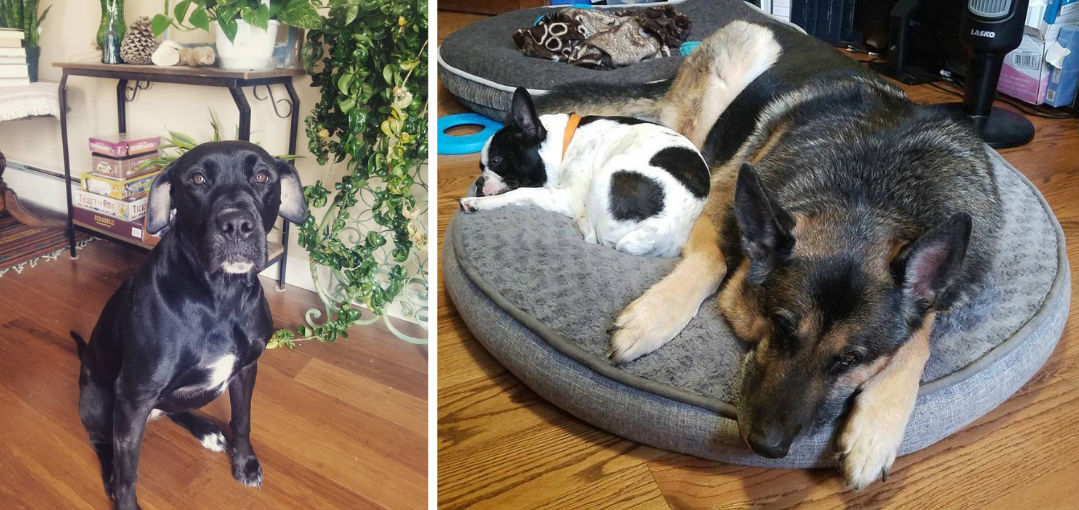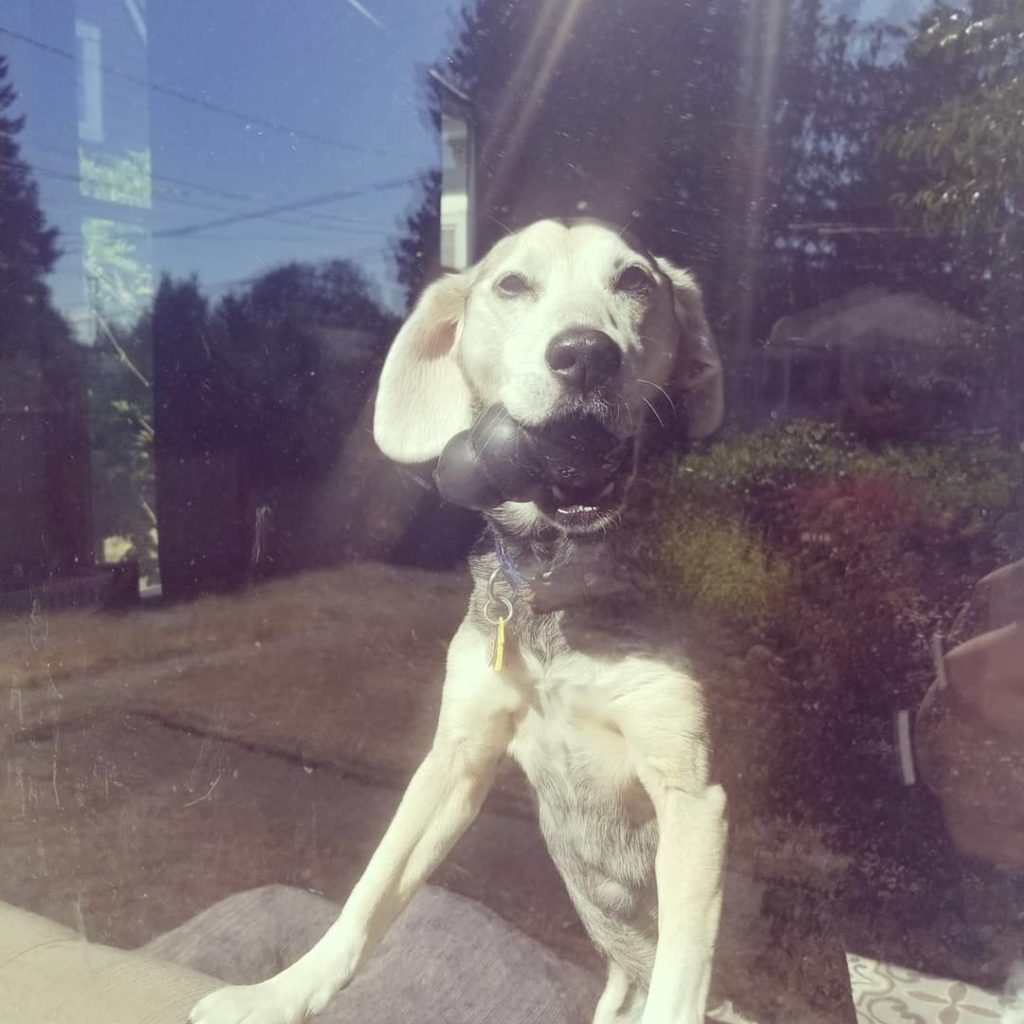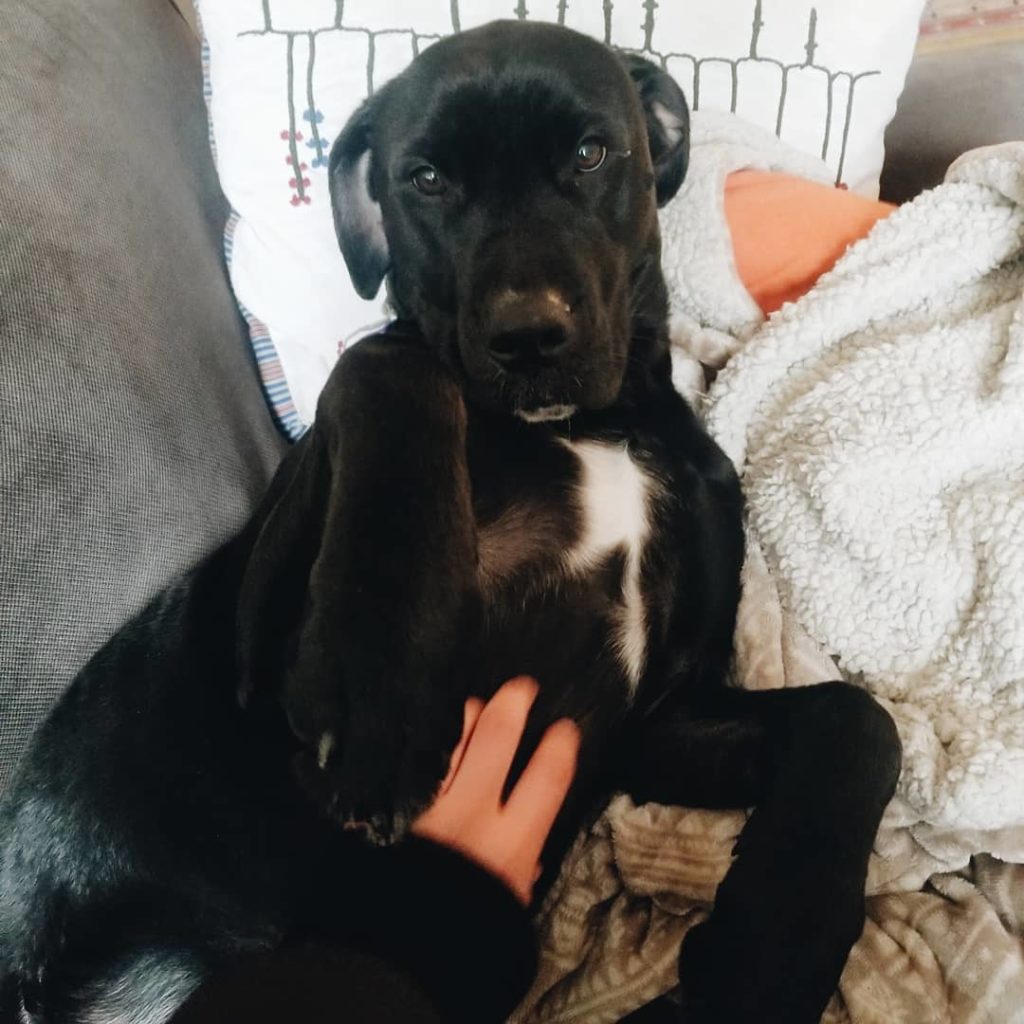
Leaving your dog at home can be stressful for pup and owner alike. Nobody likes saying goodbye to their best friend, even if it’s just for an eight-hour workday!
As the dog days of summer continue and calendar dates inch closer to the holidays, however, seasonal travel plans (spanning longer than a single workday) start to materialize — which means now might be the best time to start preparing your pooch for some alone time. If your dog demonstrates signs of pet separation anxiety, read on for symptoms, causes, and Strut the Pup-approved ways to ease a worried dog’s nerves.
Symptoms of Separation Anxiety in Dogs
Separation anxiety is most often diagnosed in dogs, and it goes beyond a so-long whine or the occasional misplaced shoe — anxiety in dogs is indicative of real distress and emotional discomfort. True separation anxiety is caused by distrust, often stemming from a change in guardianship, schedule, residence, or household membership.
If your dog demonstrates a few of these symptoms of separation anxiety on a regular basis, then it’s possible they’re dealing with stress when left at home alone:
- Having an accident inside … after they’re housebroken
If your pup still has accidents when you’re around, then it’s unlikely anxiety is causing their accidents while you’re away; they’re probably just not fully potty-trained yet! If they’re already housebroken, however, accidents in the house could be a cause for concern. - Lots of barks or howls
Mournful yips upon an owner’s departure is normal, but if you get reports of your dog making unreasonable amounts of noise while you’re away, your dog might be stressed out by themselves. - Chewing, digging or frantic scratching
No one likes to come home to a mess — as aggravating as chewed objects, scratched door frames or damaged furniture is after a long day, pet owners have to consider the cause of this doggy destruction before taking immediate action. Destructive behavior can lead to self-harm, including broken teeth, raw paws, or damaged nails, so it’s especially important to confront the underlying issue. - Nervous, obsessive pacing
If your pup starts to pace in a fixed pattern when you look like you’re about to leave, it might mean they have some unsettled nerves. - Escape attempts
Unfortunately, this isn’t Homeward Bound — if your dog is attempting to escape regularly, it’s more worrisome than it is heroic or heartwarming. - Noticeably abnormal panting or drooling
Oftentimes, when a pet is dealing with separation anxiety, they exhibit symptoms when you start your morning routine or show signs that you’re about to leave, like putting on your shoes or coat. Keep an eye out for out-of-character panting or excessive drooling when you make moves toward the door.
Is It Actually Separation Anxiety, Though?
Like with most issues, diagnosis is the first step in dealing with pet-owner separation anxiety. One important thing to note, however, is that separation anxiety isn’t the only cause of the behaviors listed above. Inadequate or incomplete training, other medical issues, or reactions to medications are all examples of other things that can cause your pup to act out when you’re not home. Be sure to check in with your vet or trainer about the behavior if you’re unsure.
There are also environmental elements that could cause your dog to exhibit some of the symptoms listed above. Your dog could be howling and barking, for example, because they’re frustrated, territorial, or seeking attention — barking is a dog’s primary means of communication, so there are a number of possible triggers unrelated to separation anxiety. Make sure you leave your pooch in a safe place with plenty of room to roam.

Lastly, because dogs also need mental stimulation during the day, it’s possible for a dog to get bored while their human is away. If your dog doesn’t appear to be nervous or anxious when you leave but they still show some of these behaviors when you’re gone, they might not have enough to do to keep themselves occupied. Be sure to leave them toys and space to play so they don’t get restless while home alone!
Solutions for Pet Separation Anxiety
Improper training may be the cause for bad behavior in some cases, but proper training is the solution in most. Slowly, consistently teaching your dog to believe you’ll return home to him at the end of the day is key. Here are a few ways you can do this:
- Limit the amount of time they’re alone
For more severe cases, it’s important to limit the amount of time your dog is left alone. It’s great if you work close to home and are able to check in on your pooch during your lunch break — but if not, hiring a dog walker to make daily visits is also a good solution. Your dog will appreciate the reminder that they’re not alone, as well as the opportunity to get some fresh air and midday exercise in. - Teach them that being separated is okay
Try a technique called counterconditioning: leave them a special treat each time you leave that calms their nerves. Treats that entertain dogs for longer amounts of time, like food-filled toys or durable chew toys, not only act as a distraction, but they’re also something your dog can look forward to while you’re away. Just make sure you take the toy back each night after you return! - Tone down the greetings
Don’t make a big deal out of a small thing! Hellos and goodbyes should be calm and collected, showing your dog that they’re no biggie. A small pat on the head, or even a delayed greeting once you get home, should do the trick. - Exercise
A tired, content pup is more likely to rest during the day. Regular exercise (maybe even before you leave for the day) can help your dog settle down when you’re gone.
Dog Sitters & Separation Anxiety in Dogs

Professional dog walkers and overnight pet sitters like the ones on the Strut the Pup team are experts in reinforcing good behaviors while you’re away — even if that only means keeping your pup busy with fun things to do! Oftentimes, pets with separation anxiety appreciate any company, especially the company of a trusted pet sitter.
Like humans, a healthy lifestyle for dogs includes regular exercise and socialization, and it’s important that your pup satisfies these needs at all times — especially while you’re at the office, taking an overnight trip, or on an extended vacation. Separation anxiety is a common behavioral issue that many dog owners deal with, but it doesn’t have to be permanent. If you’ve tried to nip these anxiety-induced behaviors in the bud before to no avail, our certified Trainer/Behaviorist would be happy to offer extra help. With some expertise and a little bit of patience, your pet will start feeling comfortable alone in no time!
